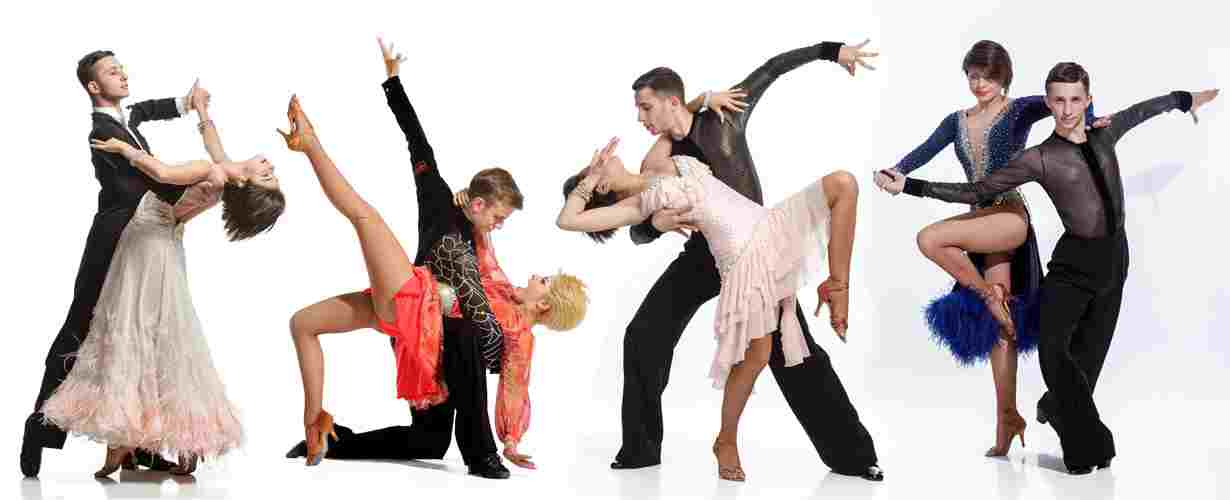Little Known Facts About Dance Fridays.
Wiki Article
The Dance Fridays Statements
Table of ContentsDance Fridays for BeginnersThings about Dance FridaysGetting My Dance Fridays To WorkA Biased View of Dance Fridays
Let's assume of Salsa dancing and songs as a huge Tree that resembles this: Salsa is danced world-wide while numerous technological elements of the dancing coincide throughout styles (6 actions over 8 beats danced on a quick-quick-slow or slow-quick-quick rhythm), there are a number of "trademark" attributes of the primary designs of Salsa that identify one from the other.Pairs joining a Gambling enterprise Rueda dance all relocations in unison as called by a Leader. Distinct functions of Cuban design salsa are round turn patterns (with "break back" actions on matters 1 and 5) as well as body language motivated by traditional Afro-Cuban folkloric dancings. Distinguishing attributes of Cali style salsa fasts and complex footwork, danced with a solid hand hold connection in between partners.
The beginnings of the design are a topic of argument, but it is claimed that New York design Salsa dance came from the 1960's because of the increase of Latin American emigrants after the Cuban Transformation. Eddie Torres is one of the most popular New york city design dancer, being nearly universally credited with popularizing the design to dance centres outside of New York.
The fundamental rhythm of "On-2" is slow-quick-quick. The "youngest" of the designs of Salsa, L.A. Design (some people have called it "West Coastline" design) ended up being preferred in the 1990's and has its beginnings in ballroom (Mambo, Swing and Cha, Cha, Cha). Transform patterns lead and adhere to techniques are heavily influenced by these styles, with the Cross Body Lead being the keystone of the design.
What Does Dance Fridays Do?
Design are execution of turn patterns and numbers in the "port", with the break steps on counts "1" and "5". While Salsa songs has strong origins in Cuban, Colombian and Puerto-Rican folkoric customs, it can not be discounted that all Afro-Latin and Latin American societies have added to contemporary Salsa music as we recognize it today.It's feasible that due to political factors the contribution of Afro-Cuban culture and heritage to contemporary Salsa in the 1960's and 70's is not widely acknowledged, however it can not be neglected the substantial contribution and influence of the "Queen of Salsa", Celia Cruz. A house name in Cuba and the Central Americas as a vocalist in the 1950's, Celia left Cuba for the U.S

Today Salsa songs is produced, carried out and well known globally. In 2000 the impact of Latin American music and society (not simply Salsa) was acknowledged by the National Academy of Recording Arts and Sciences in the United State and the Latin Grammy Honors were produced. The Latin Grammy's have accentuated the Salsa Legends and contemporary Salsa musicians alike
Some Ideas on Dance Fridays You Should Know
differentiating website link characteristics of Salsa songs are: 4/4 time signature, Son Clave and Tumbao rhythms, Montuno Piano Unless you have a background in music, the above 3 attributes probably indicate absolutely nothing to you. A much easier method to describe Salsa music is exactly how it does NOT seem like other kinds of Latin American music.Bachata is a straight 4 beat dancing with an occurrence of a syncopated guitara line and a clear absence of any type of "tough" piano, brass (trumpet, trombone) lines. Cha, Cha, Cha looks like Salsa songs one of the most as it really feels like "really slow-moving" salsa/mambo. salsa club san francisco. Cha, Cha, Cha can be distinguished by it's focus of the double tumbao beat on counts 4 +5 and 8 +1 (the "cha-cha-cha") You have actually been to a Salsa evening at a club and you're hooked you like the songs, the energy, the look of two professional dancers gliding across the dance flooring executing trendy spins and turn patterns
It's time for lessons. With so lots of workshops available and various designs to select from, where does a complete novice begin? The majority of all new dancers pick to find out L.A. "On-1" design slotted Salsa designs are the most common in The United States and Canada (with some exemptions of some city centres that still predominantly accept Cuban and Puerto Rican designs) and L (https://issuu.com/salsacrazysf1).A
.A. Style will promptly instruct you the basics of Salsa timing, weight transfer and transform pattern execution. Lots of dancers, when they have actually had a year or two of dancing L.A. Style Salsa under their belts, "button" to New york city style in order to diversify their dance vocabulary; yet several professional dancers decide to stay with just one style of Salsa and appreciate their time on the dancing flooring in that specific design (salsa club san francisco).
Style and New York Design all being danced in the very same club, with several of the professional dancers being able to switch from one design to the various other from one tune to the next. No issue which style you choose it is very important to stick to that design up until you're really comfy with the basics of timing, body rhythm and foundation action implementation before considering "changing" styles (if you intend to).
Report this wiki page